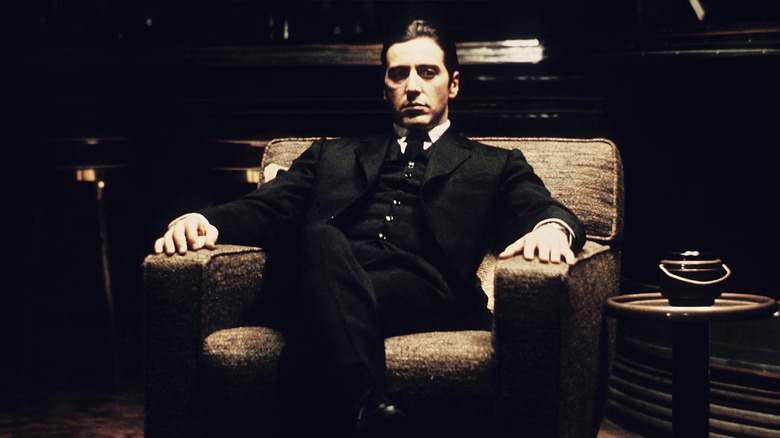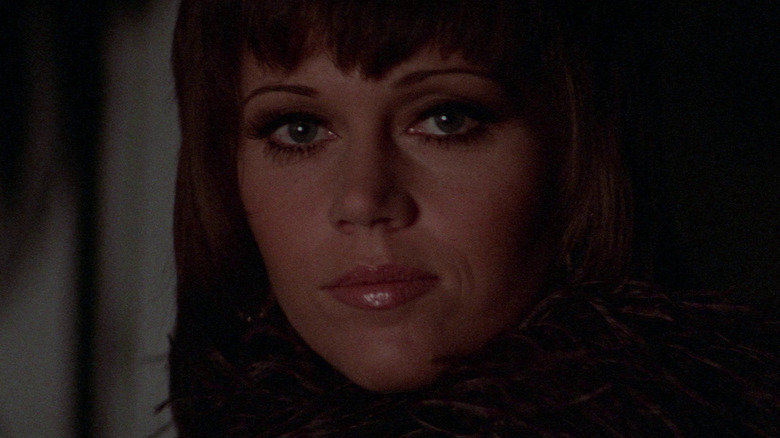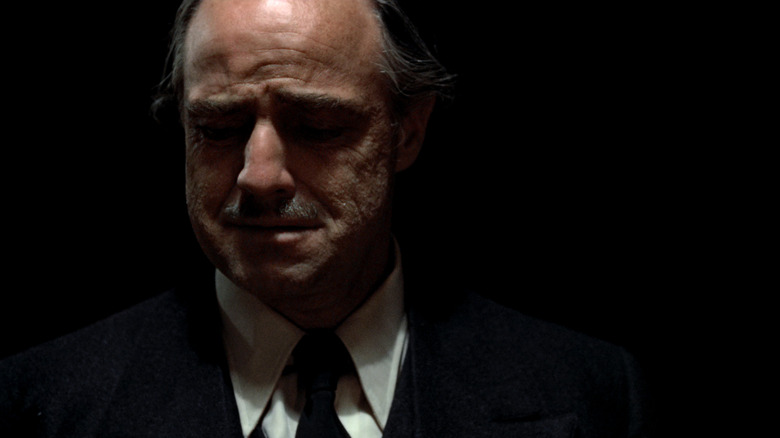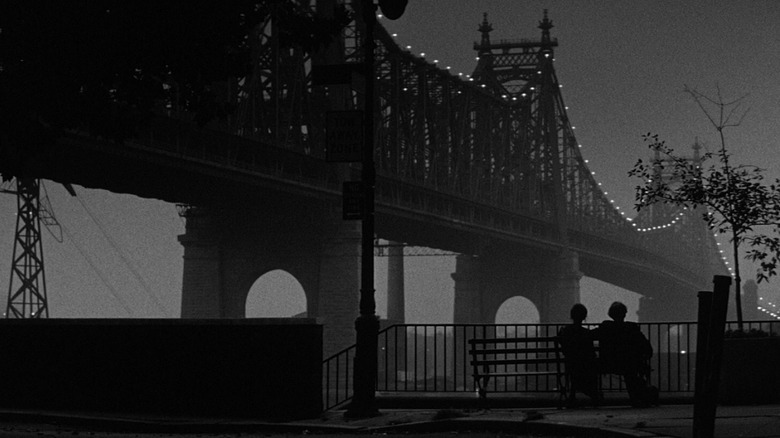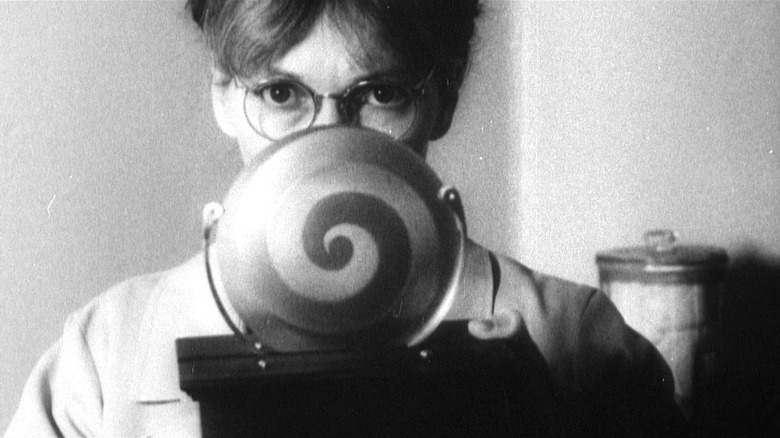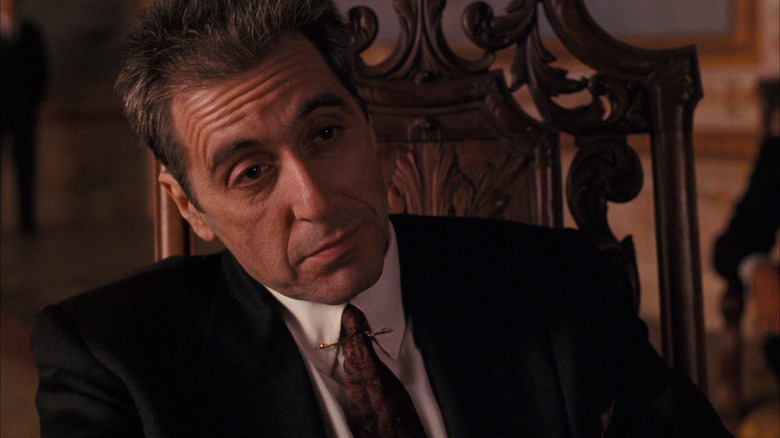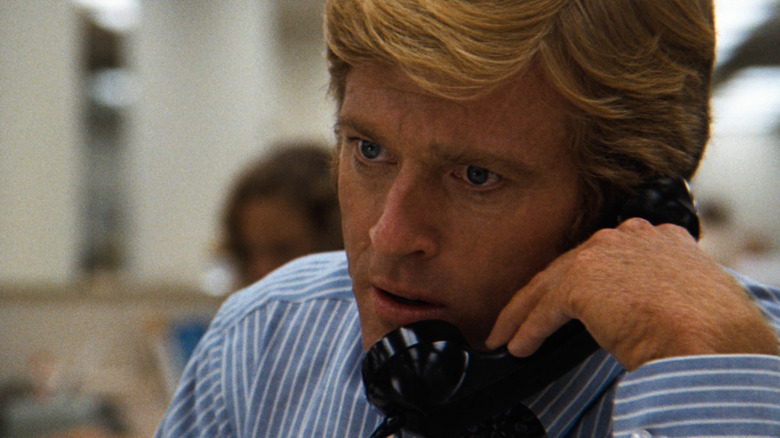Is The Godfather Cinematographer Gordon Willis The Most Disrespected Oscar Nominee Of All Time? An Investigation
(Welcome to Did They Get It Right?, a series where we look at Oscars categories from yesteryear and examine whether the Academy's winners stand the test of time.)
When it comes to discussions about where the Academy Awards faltered, they usually center above-the-line categories, like Best Picture, Best Director, or the acting races. They are the starry, big-name categories — and if you look through the history of my "Did They Get It Right?" series, most of them will be about those races. After all, they are the ones that first pop into your head.
But snubs and surprises aren't simply relegated to the above-the-line categories. Below the line, there are just as many baffling decisions made over the 95-year history of the Oscars. Costume designers, editors, and sound mixers have all fallen victim to losing to an inferior choice or not getting a nomination at all for stellar work. One particular master of their craft saw very little success at the Oscars, and considering his influence, the filmmakers he worked with, and the legendary films he helped bring to life, I find it to be one of the truly baffling situations for an artist in the history of the Academy.
I am talking about cinematographer Gordon Willis, whose work on films like "The Godfather," "The Godfather Part II," "Annie Hall," "Manhattan," "All the President's Men," and "Klute" went completely unheralded. The man merely received two nominations in his career and never won outside of a lifetime achievement award in 2009 that basically amounted to the Academy saying, "Sorry we f***ed up." So, how did someone integral to so many of the great films of the New Hollywood era end up with so little hardware? Well, let's see if we can figure it out.
The Prince of Darkness
Before we get into the specific films and races Gordon Willis was a part of, we need to understand what made him such a remarkable cinematographer in the first place. Among his many attributes as a visual stylist, the most prominent of which was his ability to wield shadows and underexposure in a way almost no one had before, especially in color photography. Through minimalist, carefully placed hard lighting, Willis had the ability to illuminate and capture on film just the right amount of information to portray the emotion at the heart of a given scene.
Conrad Hall, the cinematographer behind films ranging from "Butch Cassidy and the Sundance Kid" to "American Beauty," went so far as to dub him "the prince of darkness," and this remarkable ability to harness darkness was evident from his very first film as a cinematographer, 1970's "End of the Road."
Film — and I mean actual celluloid — required a tremendous amount of light in order to produce an image, especially back in the day. The ISO for a film stock in the early '70s would top out at around 100, which is a far cry from the 200-500 rated stocks made today or digital sensors that go up into the thousands. The higher the ISO, the easier it is to film in low-light conditions.
Gordon Willis was pushing the limits of what film and light could do with his work, and not only was he making images that were unlike just about anything in cinemas at the time, each one was more beautiful than the last. Nowadays, we have so many complaints about films and TV shows that are too dark to see anything. They are all trying to do what Gordon Willis achieved — and failing miserably.
10 nominations, but not for cinematography
The first film of Gordon Willis to have major success at the Oscars was Alan J. Pakula's phenomenal paranoia thriller "Klute," which earned Jane Fonda the Best Actress award. Its only other nomination was for Best Original Screenplay, but this isn't a piece for me to complain about how "Klute" should've gotten way more. Obviously, that means Willis was left out of Best Cinematography. Despite that film's greatness, the overall support clearly wasn't there.
But the following year saw the release of "The Godfather." The film tied for the most nominations of the evening with 10 and ultimately took home the Best Picture trophy. It would be one thing for Gordon Willis to lose to Geoffrey Unsworth for his fantastic work on "Cabaret." In fact, "The Godfather" lost quite a bit that evening to "Cabaret," so it wouldn't have been that odd. It's an entirely different thing to not even nominate Gordon Willis, which is exactly what happened.
The cultural impact of "The Godfather" goes far beyond its grand, operatic storytelling, memorable characters, and shocking violence. From the opening shot of actor Salvatore Corsitto delivering the "I believe in America" monologue, how Willis uses sparse lighting to basically have this man's face illuminated in a sea of blackness immediately grabs your attention. It's haunting and beautiful, and for the next three hours, he utilizes every tool in the chest to create images that make the world's evils as enticing as they are horrific.
"The Godfather" isn't as grand without Gordon Willis, and the Academy failed to see that. Two years later, they failed once again when he didn't get nominated for "The Godfather Part II," which also won Best Picture and took even more visual risks. It's perhaps the greatest Oscar snub in history.
Blanked throughout the 1970s
Though Gordon Willis is best known for "The Godfather" films, Francis Ford Coppola was not his main collaborator. The two directors Willis would return to work with time and again were Woody Allen and the aforementioned Alan J. Pakula. He began his collaboration with Pakula back with "Klute" and would wind up acting as cinematographer for four of the director's six movies in the 1970s. As for Allen, he started working with him on his 1977 landmark romantic comedy "Annie Hall" and would continue on with the director through 1985's "The Purple Rose of Cairo." That may not seem like a huge amount of time, but Woody Allen basically made a film every single year. That's a lot of work.
Between those two filmmakers in the 1970s, they would amass two Best Picture ("Annie Hall" and "All the President's Men") and three Best Director nominations (those two plus "Interiors"), including a win in each for "Annie Hall." The films Willis worked on with those directors that didn't reach those top two categories are just as well-remembered today as the ones that did get nominated, such as "Manhattan" and "The Parallax View." These are major films made by major filmmakers getting major Oscars attention, and for all of them, Gordon Willis received nothing from the Academy.
All of these movies are perfectly worthy of nominations, but the snub I find to be truly baffling is "Manhattan." I find going back to that particular film, which involves a plot line of Woody Allen's character dating a 17-year-old, extremely difficult. Even if you can't get past its content, Willis' black-and-white cinematography alone makes it something you can't completely erase, and I'd argue it's one of the best-looking films of the 1970s. And yet ... nothing for Gordon Willis.
An overdue breakthrough
Gordon Willis wouldn't receive his first Academy Award nomination until 1984. Despite him essentially defining what American cinema looked like in the New Hollywood era, he wouldn't be recognized for his work until after the New Hollywood era had been put to rest. At least that first brush of Oscar glory would come with one of his key collaborators with Woody Allen, as Willis' first nomination would be for the mockumentary "Zelig."
"Zelig" wasn't a case of him riding a film's coattails to his first nomination. The film only received two, one for Willis and one for Best Costume Design. As it happens, "Zelig" was something of a departure for the cinematographer, whose strong suit had always been steady, meticulously composed frames. The film blends a mixture of different visual styles together. Most notably, there are those made to look as if they were shot in the 1920s. These sequences are rough and unpolished, which basically are the opposite of the beautiful images Willis made in a film like "Manhattan." They needed to be able to be perfectly interwoven with actual archival footage from the time, and if they didn't feature recognizable actors, you really wouldn't be able to tell.
To me, this reads the same way as an actor getting an overdue Oscar nomination for a biopic after a career of groundbreaking, experimental work. Because "Zelig" directly references a visual language the members of the Academy can directly compare it to, they can see the merit and skill in it. Sometimes voters need something quantifiable to judge. Did this actor look and sound like this real person? Yes, and here's your nomination. "Zelig" is a cinematographic feat, but it's one the Academy can easily recognize. And that does it for Willis' Oscars success in the 1980s.
A make-up nomination
In his career, Gordon Willis only ever received one more Academy Award nomination for Best Cinematography, and it is probably the most obvious mea culpa in Oscars history. After being bizarrely snubbed for "The Godfather" and its sequel, he would finally be recognized for his work on the series in 1991 with "The Godfather Part III."
Look, we all know that the ending to this trilogy is far away from what the two previous installments were. The lack of Robert Duvall returning casts a major shadow on the proceedings, the performance by Sofia Coppola is less than stellar, and on a story level, it leaves a lot to be desired. All that being said, Gordon Willis basically picks up right where he left off visually, and no matter how convoluted or dull "The Godfather Part III" may get, you can always believe that it will dazzle you with how it looks.
At the time, the reception to "The Godfather Part III" was fairly mediocre, and in the 33 years since that reception has basically stayed the same. The recently recut version entitled "The Godfather Coda: The Death of Michael Corleone" is much better. But that wasn't the one getting seven Oscar nominations. That was the original, theatrical cut.
All of us know the film got in on legacy, a filmmaker returning to the series which many people believe produced the two greatest films ever made. Willis' nomination certainly happened because of this legacy, but I would argue that it and Andy Garcia's nomination for Best Supporting Actor could be entirely justified if you remove all of the baggage that comes with "The Godfather." It's very strange to not see Gordon Willis nominated for those first two films, but at least he didn't go 0/3.
Give credit where credit is due
One of the great things about film is that it is a collaborative medium. Whether it's five people making a short film in school or thousands on a major Hollywood production, everybody gets to bring their own perspective and voice to a project. Yes, that voice could manifest in one small thing, like the width of a jacket's lapel or the speed at which someone crosses the street in the background of one shot. But without that one thing, the film would not be what it is. We boil movies down to their directors far too often, as if they are the ones who control every single detail that happens in the frame. That just isn't the case.
Gordon Willis wasn't simply a functionary for a director to tell him exactly what to do. Gordon Willis was an artist. If you look across all of the films he served as the director of photography on from 1970 to his final film in 1997, "The Devil's Own" (which was also Alan J. Pakula's final film), you will see someone with a clear vision constantly innovating.
Not only are his images worthy of being projected in museums alongside other great works of visual art, but he had an innate sense of story, character, and tone that perfectly melded with what so many filmmakers were trying to get across to an audience. It could be a paranoid thriller, a romantic comedy, or a pastiche musical. He brought to life so much great work, and it is a shame that the Academy — and the industry as a whole — never recognized what Willis was doing while he was doing it.
